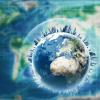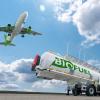
IIASA researchers contributed to a new study in Nature, that for the first time presents quantifiable numbers and a solid scientific foundation to assess the state of our planetary health, not only regarding Earth System stability and resilience, but also in terms of human wellbeing and justice.
According to the authors, humans are taking colossal risks with the future of civilization and everything that lives on Earth. Developed by the Earth Commission – an international science commission convened by Future Earth as the scientific cornerstone of the Global Commons Alliance – the study engaged more than 40 researchers from across the globe, to deliver the first quantification of safe and just Earth system boundaries on a global and local level for several biophysical processes and systems that regulate the state of the Earth system.
The results highlight that a just world is humanity's best bet at a safe future. Justice, assessed based on avoiding significant harm to people across the world, tightens the Earth system boundaries, providing even less available space for humans on Earth.
The study quantifies safe and just boundaries for climate, biodiversity, freshwater, and different types of pollution, revealing that most of these boundaries have already been breached. Human activities are causing significant harm, altering water flows, releasing excessive amounts of nutrients into waterways, and depleting natural areas. These threats pose existential risks to a stable planet, ecosystems, and the wellbeing of communities worldwide.
“Our results are quite concerning: Within the five analyzed domains, several boundaries, on a global and local scale, are already transgressed. This means that unless a timely transformation occurs, it is most likely that irreversible tipping points and widespread impacts on human wellbeing will be unavoidable. Avoiding that scenario is crucial if we want to secure a safe and just future for current and future generations,” explains Johan Rockström, Earth Commission Co-Chair and a study lead author.
To ensure a safe future, the study emphasizes the need for global targets that go beyond climate change and encompass all biophysical systems and processes on Earth. The Earth system is interconnected, and interference in one part can have enormous impacts in other regions. By using Earth System Boundaries as an entry point for holistic and transformative action, the world can progress towards a safe and just future.
“One of the areas we focused on was identifying integrated indicators which could bridge Earth and human systems. Such integrated indicators are essential to quantify the safe and just Earth System boundaries,” notes IIASA Emeritus research scholar, Nebojsa Nakicenovic, one of the study’s authors.
“Ensuring that the boundaries not only ensure stable and resilient conditions on Earth, but that they also take into account issues of justice, to minimize human exposure to significant harm will help to enable a prosperous and equitable future for both people and planet,” adds IIASA researcher Caroline Zimm, who was also a study coauthor.
The authors hope that the newly developed Earth Systems Boundaries will guide the setting of new science-based targets for businesses, cities, and governments to address the interconnected challenges of climate change, biodiversity loss, water shortages, ecosystem damage, and air pollution. Stakeholders in all sectors must measure and improve their impact on people and the planet while operating within the finite limits of the Earth.
IIASA is a founding member of the Global Commons Alliance, which emerged as a follow up from the work on Global Commons in the Anthropocene (2016) co-authored by Nakicenovic and Zimm.
Adapted from material prepared by Future Earth, the Earth Commission, and the Global Commons Alliance.
Reference
Rockström, J., Gupta, J., Qin, D., Lade, S.J., Abrams, J.F., Andersen, L.S., Armstrong McKay, D.I., Bai, X., et al. (2023). Safe and just Earth System Boundaries. Nature DOI: 10.1038/s41586-023-06083-8
News

22 July 2024
Are sustainable aviation fuels truly sustainable?

17 July 2024
Forests endure as carbon sink despite regional pressures

16 July 2024



